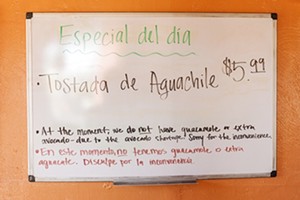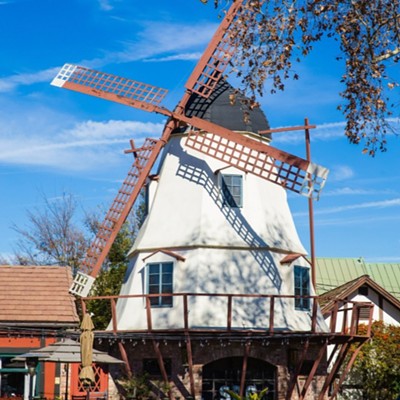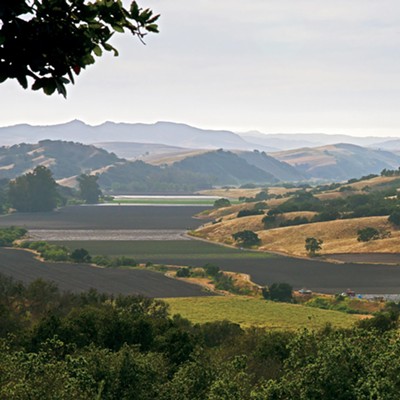"At the moment, we do not have guacamole or extra avocado," read the sign posted in a hallway of El Pueblito Restaurante's main entrance on Sept. 22. The straightforward statement was followed by an apology, and an explanation as to why the Santa Maria restaurant was missing one of its key ingredients.
It wasn't poor planning, late shipping, or an inventory miscalculation, but rather a statewide shortage of avocados that has left many residents of Santa Barbara County paying significantly more for a normally readily available fruit.

A combination of undesirable weather and circumstance is to blame for California's most recent short supply of local avocados, according to longtime farm manager Rick Shade, who said the most recent avocado harvest was California's worst in nearly 30 years. Shade, who oversees nearly 80,000 avocado trees near Santa Barbara and chairs the California Avocado Commission, said this year's crops produced about half what they normally do.
But demand has increased. The Hass Avocado Board said through a communications representative that while they've seen recent growth in demand in the U.S., supply has decreased.
Because of the short supply, this year's harvest also ended several weeks earlier than normal. While Shade's farms near Santa Barbara usually produce until late October and farms near Santa Maria often produce until December, he said most farms this year were finished harvesting by Sept. 1.
Several packing houses have closed for the remainder of the season, Shade said, and work for pickers is running low.
The light production can't be pinned on wind or freezing, Shade said, but on several other factors, one being a five-year drought that only recently started to break away from the Central Coast of California. Without periodic rainfall, salt accumulates in the soil surrounding avocado trees, which Shade says negatively affects the fruit.
Recent rainfall in the area didn't affect the 2017 crops, Shade said, because avocados grow on a two-year cycle. The 2018 crops, which are already starting to grow on local trees, were impacted by both rainfall and this summer's various heat waves, which may have sunburned some of the fruit.
Although Shade said it's still too early to tell precisely what next year's harvest will produce, he expects things to return to normal in the avocado industry.
"I'm hoping for plentiful rain this winter and good prices when we start harvesting," he said.
While Shade said local farmers were able to make up for the short supply by raising prices, local restaurants and grocery stores are still reeling from this year's light harvest.
John Spencer, owner of Spencer's Fresh Markets in Morro Bay and Santa Maria, said avocado prices have increased dramatically. Spencer said he typically buys a case of 60 avocados for about $32. Now he's paying $82. Avocados at Spencer's stores usually run for 99 cents each, but now he's charging between $2.29 and $2.69 per fruit.
Spencer's avocado sales have dropped by nearly 50 percent since the prices first rose about eight weeks ago, he said.
On top of California's unusually short production season, Mexico and Chile are also in the midst of slow harvests. Spencer said that during California's season, his market sells fruit from local farms and ranches. But for about seven months of the year, Mexico and Chile are Spencer's main avocado providers.
Mexican crops have been slow to mature this year, Spencer said, and farmers there won't be ready for harvest for another four weeks, leaving many buyers to rely on Chilean crops.
"The Chilean avocado growers are making bank," Spencer said. "The good news is come Super Bowl Sunday, it'll be a distant memory. That's the No. 1 avocado consumption day of the year."
Until then, chefs like Beto Huizar, who works at Mad & Vin in Solvang, will continue paying more for less. Huizar said that while recent prices have spiked, avocado quality has worsened.
"Last month I got a few batches that were just bad," Huizar said. Although he has yet to raise menu prices, the time could come to do so if prices aren't lowered within the next few months.
But Chef Weston Richards of Les Marchands in Santa Barbara has not been able to work around the boosted prices.
Richards said Les Marchands uses about 50 to 80 pounds of avocados a week—the restaurant's mashed avocado toast with furikake, orange, basil, and radish is one of its most popular dishes—and he sources California avocados whenever possible.
This year, he said, it has been particularly difficult to find local avocados at a reasonable price. In order to battle the cost, Richards said he is asking for more when it comes to dishes containing avocado.
But it hasn't been easy to keep up with market prices.
"Produce prices always fluctuate, particularly avocados," Richards said. "However this year has been an extreme example and a challenge to maintain profitability on dishes featuring avocado while maintaining fairness to the customer."
Staff Writer Kasey Bubnash can be reached at [email protected].










